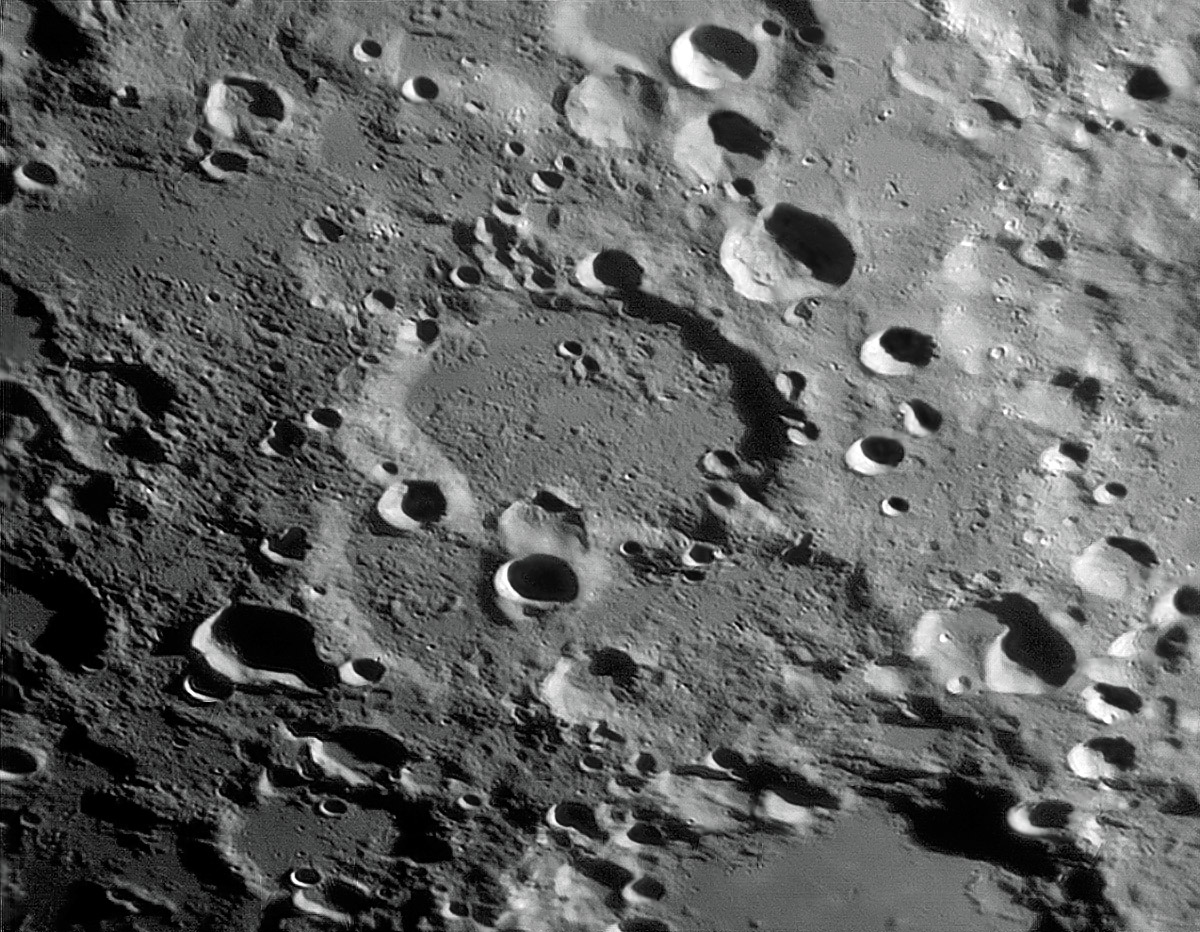March 15, 2020
More Detail, More Questions
Originally published October 2, 2010

image by Павел Пресняков, Kiev Ukraine
Fifty years ago my friends and I would sometimes hide away on the grounds of Mount Wilson Observatory to spend the night using our amateur scopes in the shadows of the big domes. On one memorable occasion low clouds hid the lights of Los Angeles, and the sky was so dark and full of stars that it was difficult to find the constellations. The sharpness of Pavel's image has a similar effect - it makes the area seem unfamiliar. But it is the old and battered highland crater Wilhelm. The sharply edged textured terrain on the southwest part of the floor appears to be a splat of basin ejecta. Smoother portions of the floor to the north look like some flowing material that ponded on the floor, surrounding and perhaps covering the pre-existing hilly terrain. Since there is little evidence that volcanic lavas erupted on highland crater floors, the interpretation would be that the smooth material was fluidized basin ejecta, presumably from Orientale. And since that smooth material is younger than the hilly material, the latter is maybe ejecta from an earlier basin such as nearby Humorum. As noted previously, smooth material - as at upper right and on the floor of Longomontonus (below right) - is difficult to interpret as fluidized basin ejecta because it is so patchy in occurrence - why didn't it fill every low space?
Chuck Wood
Important Note: I offer many thanks to Maurice Collins who very ably provided images and text for LPOD while I was away in Rome for the last two weeks. Quite frankly, it was very pleasant to not have to worry about LPOD every night, and I am very happy that someone as skilled and knowledgeable as Maurice was willing to accept the duty.
Technical Details
25.03.2010 19:21 UT. 350 mm newtonian + barlow 5x Vac-135, b/w 1280x1024 250 frames from 8000 in AviStack.
Related Links
Rükl plate 64
Wilhelm on the Moon-Wiki.
Pavel's new website
Yesterday's LPOD: Giant Turtle-Back Crater
Tomorrow's LPOD: Tiny Volcanic Features
COMMENTS?
Register, Log in, and join in the comments.



